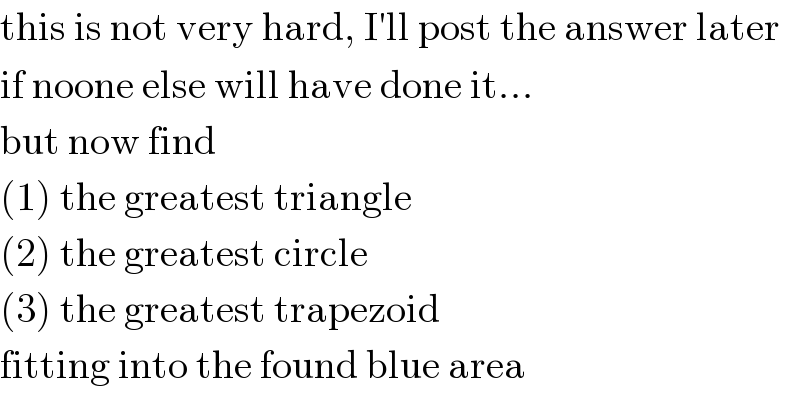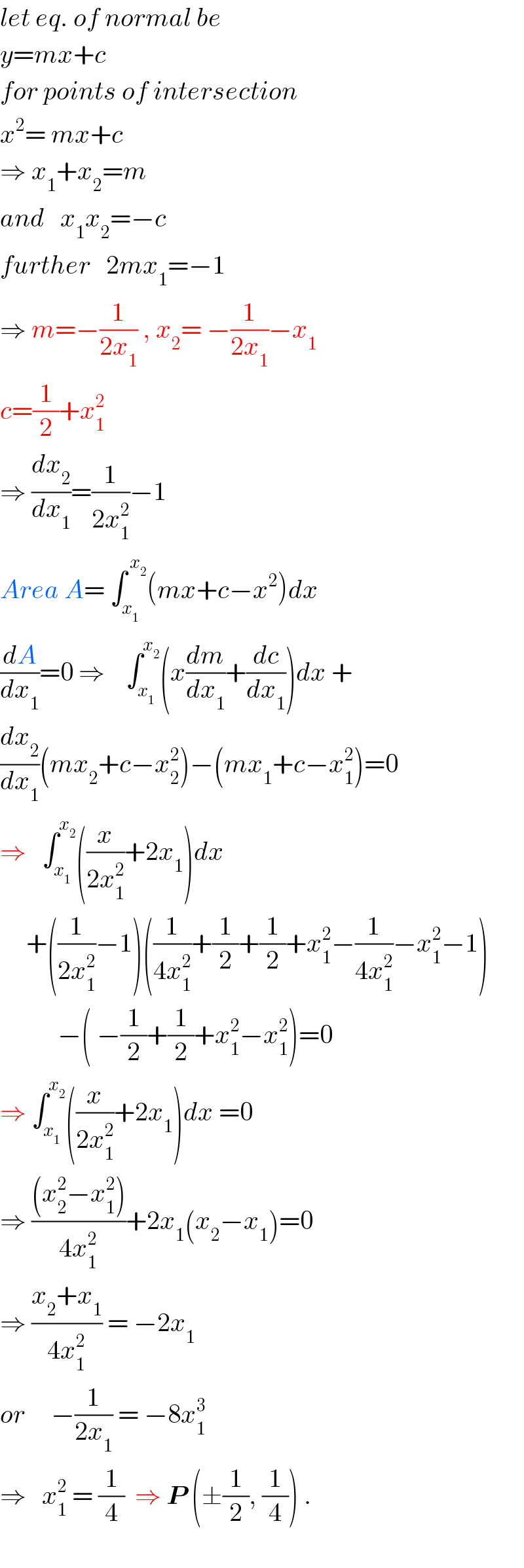
Question and Answers Forum
Question Number 42948 by ajfour last updated on 05/Sep/18

Commented by ajfour last updated on 05/Sep/18

Commented by MJS last updated on 05/Sep/18

Commented by malwaan last updated on 06/Sep/18

Commented by ajfour last updated on 06/Sep/18

Commented by ajfour last updated on 06/Sep/18

Answered by ajfour last updated on 05/Sep/18

Commented by ajfour last updated on 05/Sep/18

Commented by MJS last updated on 05/Sep/18

Commented by ajfour last updated on 05/Sep/18

